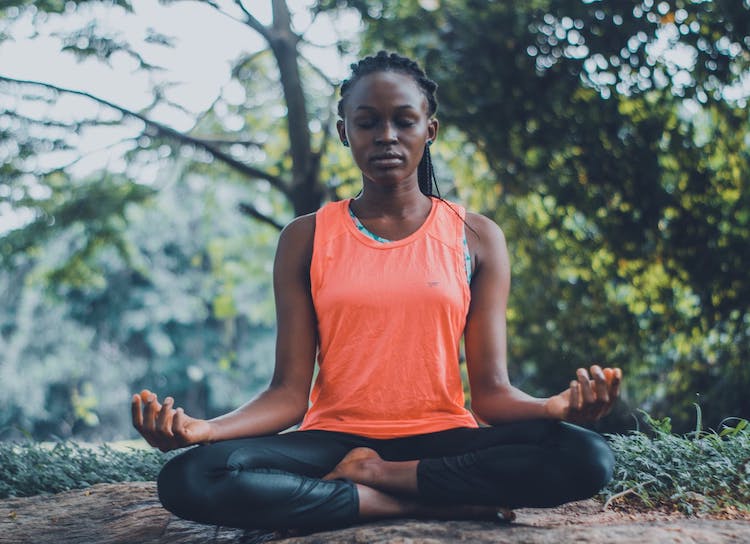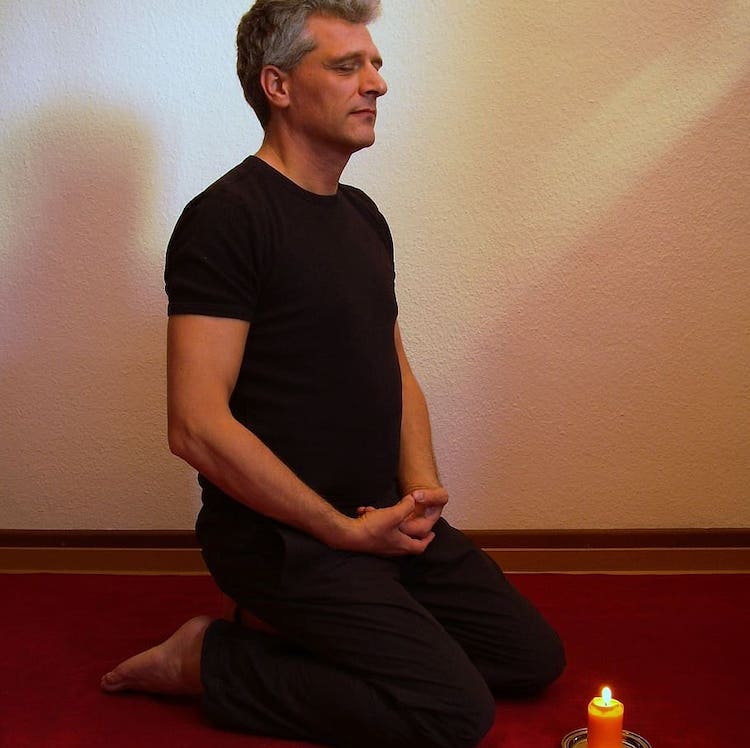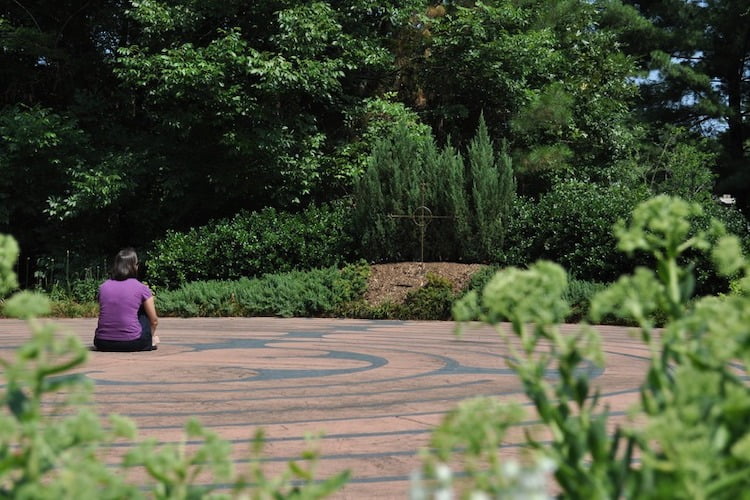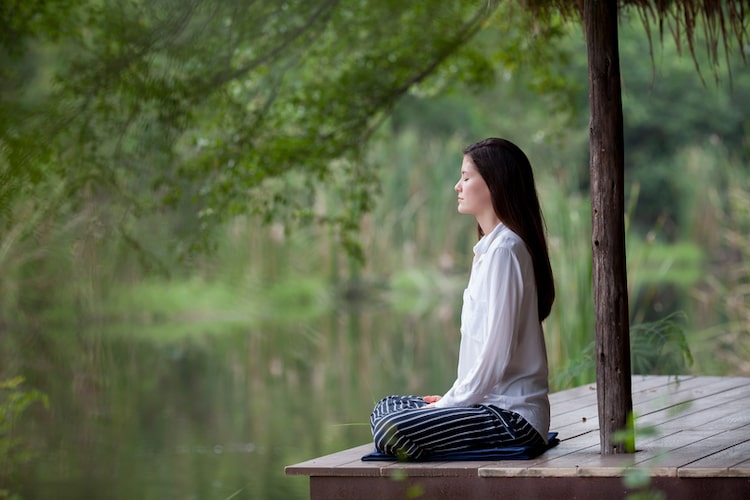A Meditation Guide For Beginners
You’ve heard people talk about the benefits of meditation—sitting quietly and focusing on the present moment instead of the millions of thoughts rolling around in your head. Maybe you’ve tried it a few times, sitting cross-legged on the floor with your fingers in little circles over your knees and your eyes closed. Maybe your mind started to race like never before. Maybe you lost track of your breath and floated into your endless to-do list. Maybe it was relaxing. Maybe it wasn’t.
The truth is, humans have been meditating for somewhere around 3,000 years. And every time someone sits down to do it for the first time (or even the thousandth time) the same flood of thoughts rushes through their heads, making it seem impossible for one to ever truly “clear” the mind.
But everyone who has ever gotten good at anything started as a beginner. It takes time and practice to develop meditation skills and even more to reap real benefits. But if you’re looking to enhance your focus, have better control of your emotions, and experience a greater sense of clarity in life, meditation can take you there.
Here are some answers to common questions that beginners have about meditation…

Where Should I Meditate?
Anywhere you want. The important thing is to have a space where you come every day to practice. It should be clean and relatively quiet to minimize any possible distractions. Of course, life happens and things will inevitably distract you during your session. The key is to gently guide your mind back to your breath and not be too hard on yourself.
You should be as comfortable as possible in whatever space you choose, wearing non-binding clothes and shoes (if any). Some choose to turn the lights off, light candles or even meditate outdoors in the sunlight. Wherever you choose, try to return the same time every day. This helps build a routine.

How Should I Sit?
Comfortably. You don’t have to climb to the top of a mountain or bend yourself into a yoga pose—just sit how you would normally sit. Take notice of any parts of your body that might not be relaxed and shift until you’re as comfy as possible. Some people enjoy sitting on the floor cross-legged, others like to sit on a chair, and some even meditate laying down in bed (just don’t fall asleep).
The idea is to eliminate as much physical distraction as possible. If your leg is falling asleep or your neck is at a weird angle, you won’t be able to concentrate fully on your practice.
How Often Should I Meditate?
There is no limit to how often or how long you can meditate besides those set by your life circumstances. For beginners, it’s recommended to try daily 10-minute sessions for the first week, build up a routine, and then increase by 5 minutes every week. If 10 minutes sitting by yourself seems undoable, even 2-3 minutes a day can get the ball rolling.
Like anything else, the more you do it, the faster you’ll see results. Keep a log of your meditations to stay accountable or download one of the many apps to keep track of how much practice time you’re getting.
“You should sit in meditation for twenty minutes every day- unless you’re too busy; then you should sit for an hour.” – Dr. Sukhraj Dhillon

What Should I Focus On During The Session?
There are many different kinds of meditation and just as many methods for getting your mind to that ultimate goal of stillness. Some meditation teachers say focusing on your breath brings you into the present moment because the breath is always present. If you find your mind racing, you can always gently bring it back to the breath.
There are also guided meditations you can listen to. These are great for beginners because they offer a variety of techniques to use. If you start to lose focus, the recording can often get you back easier than just the breath.
One of the methods often used in guided meditations is known as body scanning. Close your eyes and imagine a light shining on your toes. You can feel the warmth from it. Then, without losing focus, imagine the light slowly moving up your ankles, your shins, your thighs—all the way to the top of your head. If your mind wanders, start back at your toes and repeat. This practice gets your mind used to bringing awareness to your body and its sensations.
Use whichever works for you and switch it up to keep things interesting.

Is Meditation Religious?
Because of its ties to shamanism, Eastern religion and even some famous cults, meditation has become somewhat of a loaded word. Many people correlate mediation with religious rituals or tenants, but the fact is, it is simply a mind exercise and not inherently spiritual.
Everyone has a mind and with the complexities of modern life, it’s often running overtime. Millions of individuals, including scientists, professional athletes, and business tycoons, use meditation to better control their thoughts and emotions to live fuller, happier lives. You can add a spiritual component if you wish, or simply use the practice as a daily focus exercise.

What If I Fall Asleep?
This is a normal part of beginning a meditation practice. Your mind may not differentiate between you trying to quiet your thoughts and you trying to take a nap. Feeling sleepy or even nodding off is ok. It is vital to understand meditation is a marathon, not a sprint, and any obstacles you may face are just ways for you to get better in the long run.
If you find yourself falling asleep lying down, take your practice to the floor or a chair. It’s harder to nod off if you’re upright. You can also try meditating outside or anywhere that you wouldn’t normally sleep. Doing your practice in the daytime, when you have plenty of energy, will also help you focus and not feel drowsy.

What Is Mindfulness?
Even after you’ve finished your daily practice, rolled up the yoga mat and blew out the candles, the work doesn’t have to end. You can practice mindfulness (an important component to meditation) anywhere, anytime.
Mindfulness is being aware of your thoughts. When you’re doing the dishes and your focus is on that last piece of lasagna stuck to the plate. When you’re writing a story and your mind is only thinking about that handsome detective character. That’s mindfulness.
We often go through life on auto-pilot, doing everything automatically while our thoughts are off to the races. If you can learn to focus on what you’re doing in the present moment, you’ll begin to realize that most of the stuff you’re thinking about isn’t necessary right now. In fact, sometimes it was never necessary at all and may have even been causing you anxiety for no reason.
So try and remember to be in the moment. Just like in meditation, draw your awareness to your breath or what your senses are taking in right now. How does that dish soap feel? How does that tea really taste? Take it all in and be mindful of how it makes you feel.
It might seem like sitting in one place quietly is less productive than going out and taking on the world—but it’s hard to take on the outside world if our inner world is in a tizzy.
Taking 10-20 minutes a day to just focus on the present can change everything—the way you understand your own emotions, the intensity of your focus, and the way you view consciousness in general. Give it a try, and see for yourself.
